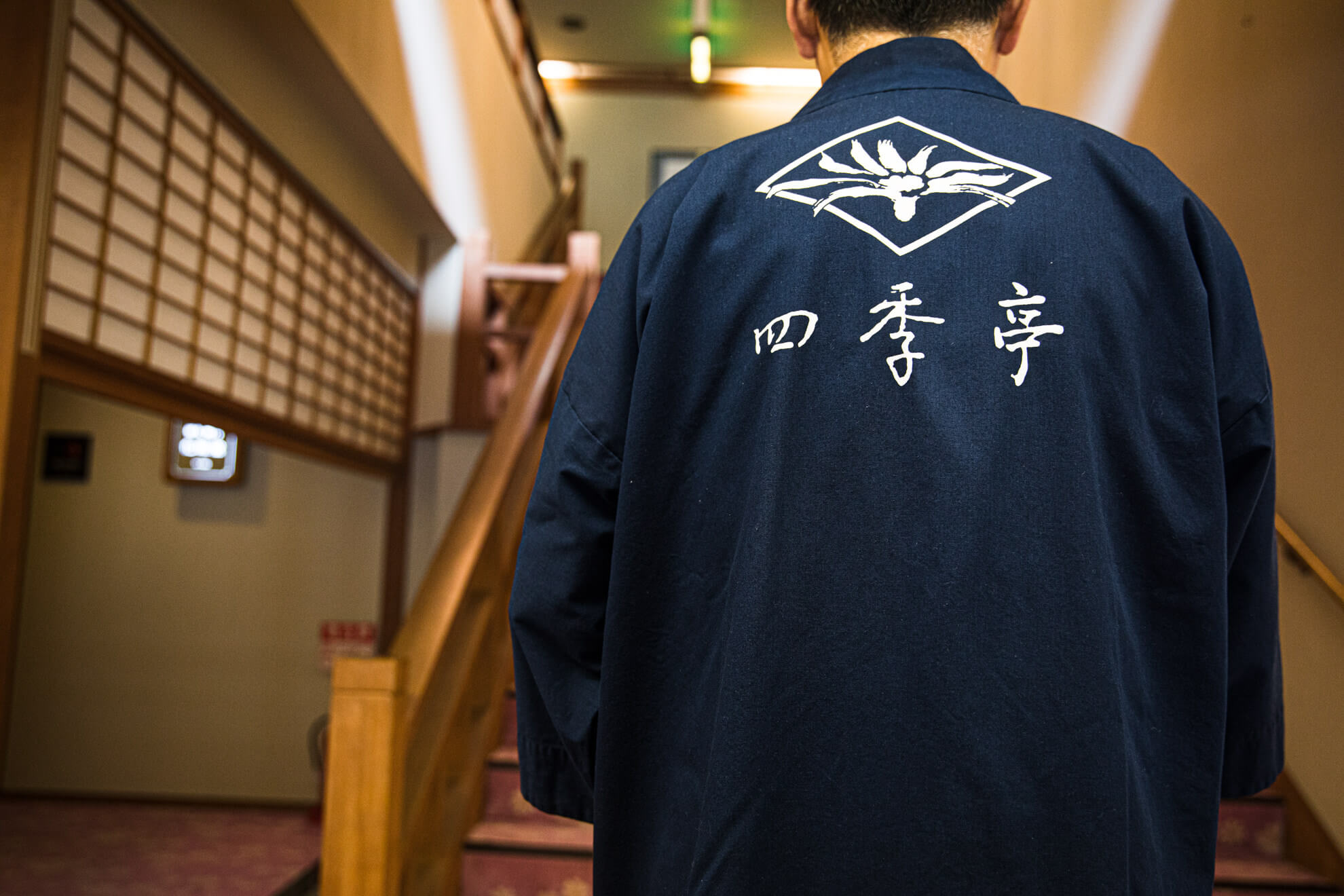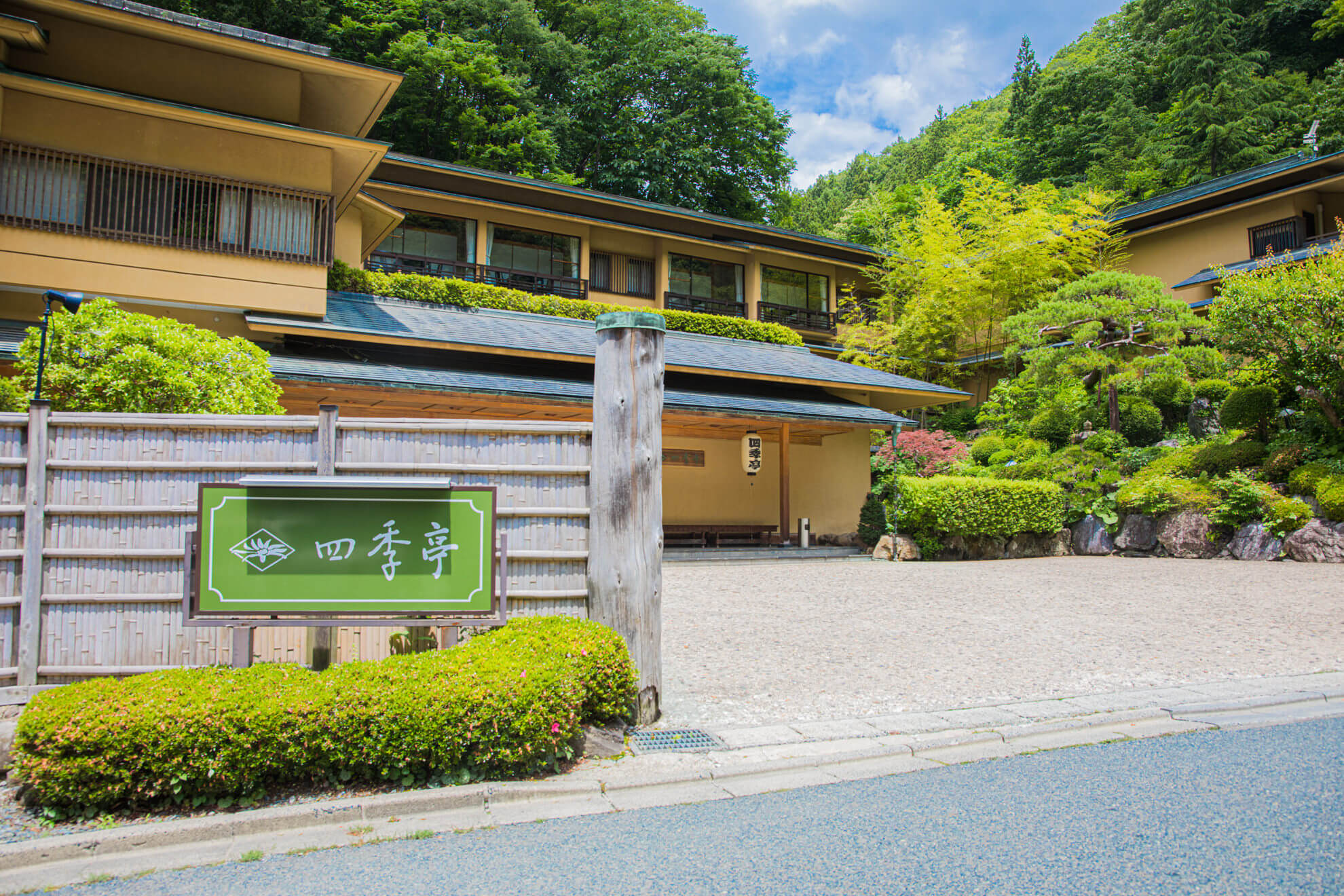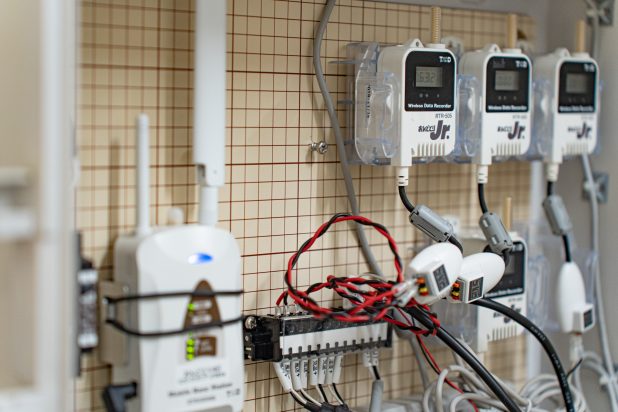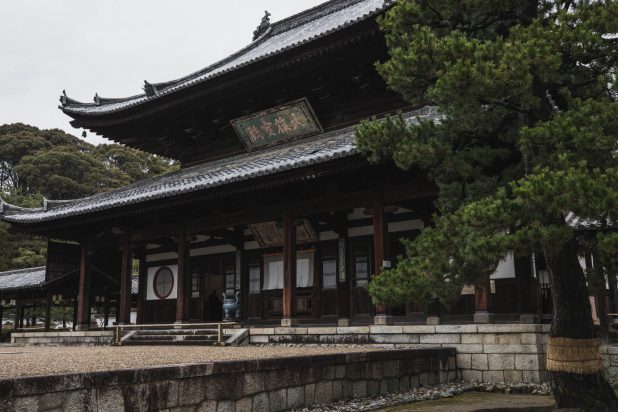Note: Names of organizations, offices, departments, etc. in the article are as of when the article was first published.
Tsunagi Onsen is located on the banks of Lake Gosho in the western part of Morioka City, Iwate Prefecture.
At the far end of the hot spring is a quintessential Japanese style onsen ryokan called “Tsunagi Onsen Shikitei”.
We visited Shikitei to learn more about their use of our wireless data logging system to help in managing the hot spring water temperature.
| Date | July 2019 |
|---|---|
| Place | Tsunagi Onsen Shikitei (Morioka City, Iwate Prefecture) |
| Models in Use | RTR-500AW, RTR-502 |
| Purpose | Temperature management of hot spring water for onsen baths |
We interviewed the president, Mr. Mase, and Mr. Ito, the front desk clerk, in the lobby of “Tsunagi Onsen Shikitei”.
Q: Were you measuring the temperature of the hot spring water before you installed our data logging system?
President Mase: Yes, we measured and checked the temperature of the bath at regular intervals. We used a simple stick thermometer and put it in the bath to measure the temperature. Of course, with a thermometer like that you can only get the temperature at that point in time, right? T&D loggers show the progress of the measurement on a graph, so it’s completely different. Shikitei uses the wireless RTR-500 Series.
For the remote units we use the “RTR-502” that comes with a waterproof external sensor, and for the base unit (collector) we use the “RTR-500AW” with a wireless LAN connection that allows us to monitor temperature on a networked PC via a Wi-Fi access point.
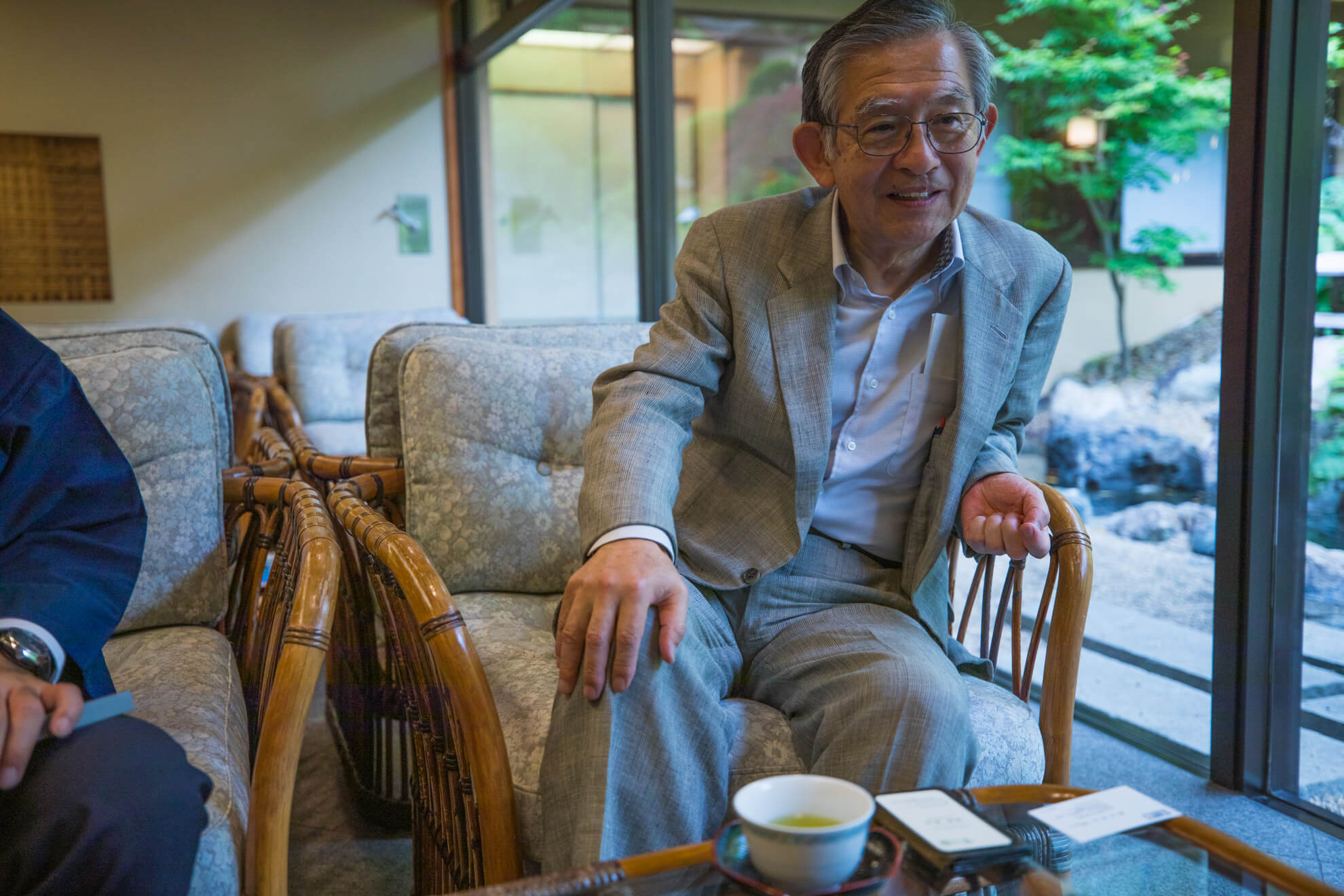
Q: How did you come to use our RTR-500 Series?
President Mase: We added individual open-air baths in some rooms. In doing so, we had to divert hot water that originally went directly to the main bath to these individual rooms from the middle of the route and we ran into a problem whereby if guests in individual rooms used too much hot water, there would be less hot water going to the main bath and it would become lukewarm.
Until then, the staff had to actually go to the main baths to measure the temperature, and they could not do so while the customers were bathing.
The staff wanted a system that would allow them to check the temperature of the water without leaving the office, and that is how we came up with the idea of introducing this system.
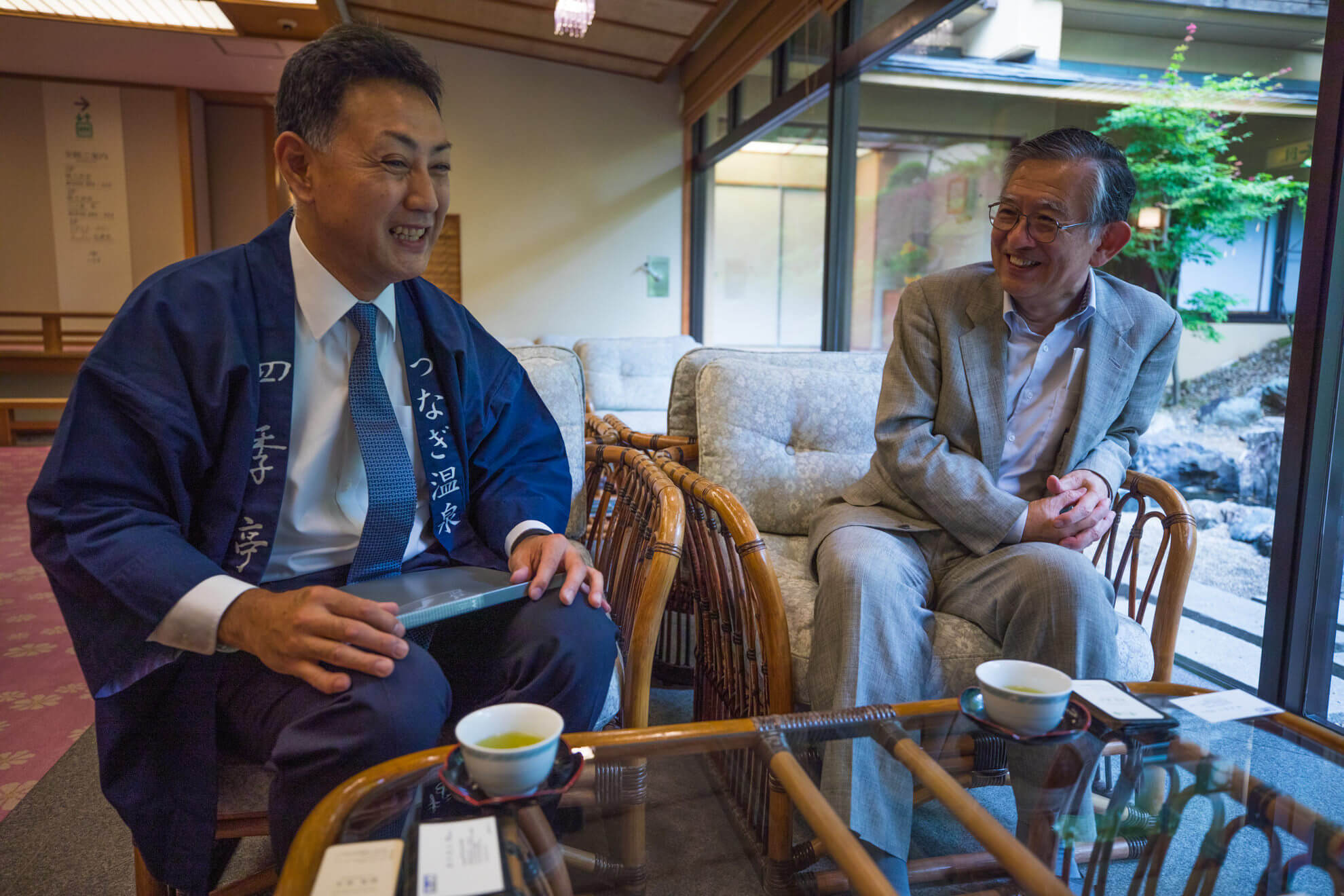
Q: Was the wireless RTR-500 Series your first time using T&D loggers?
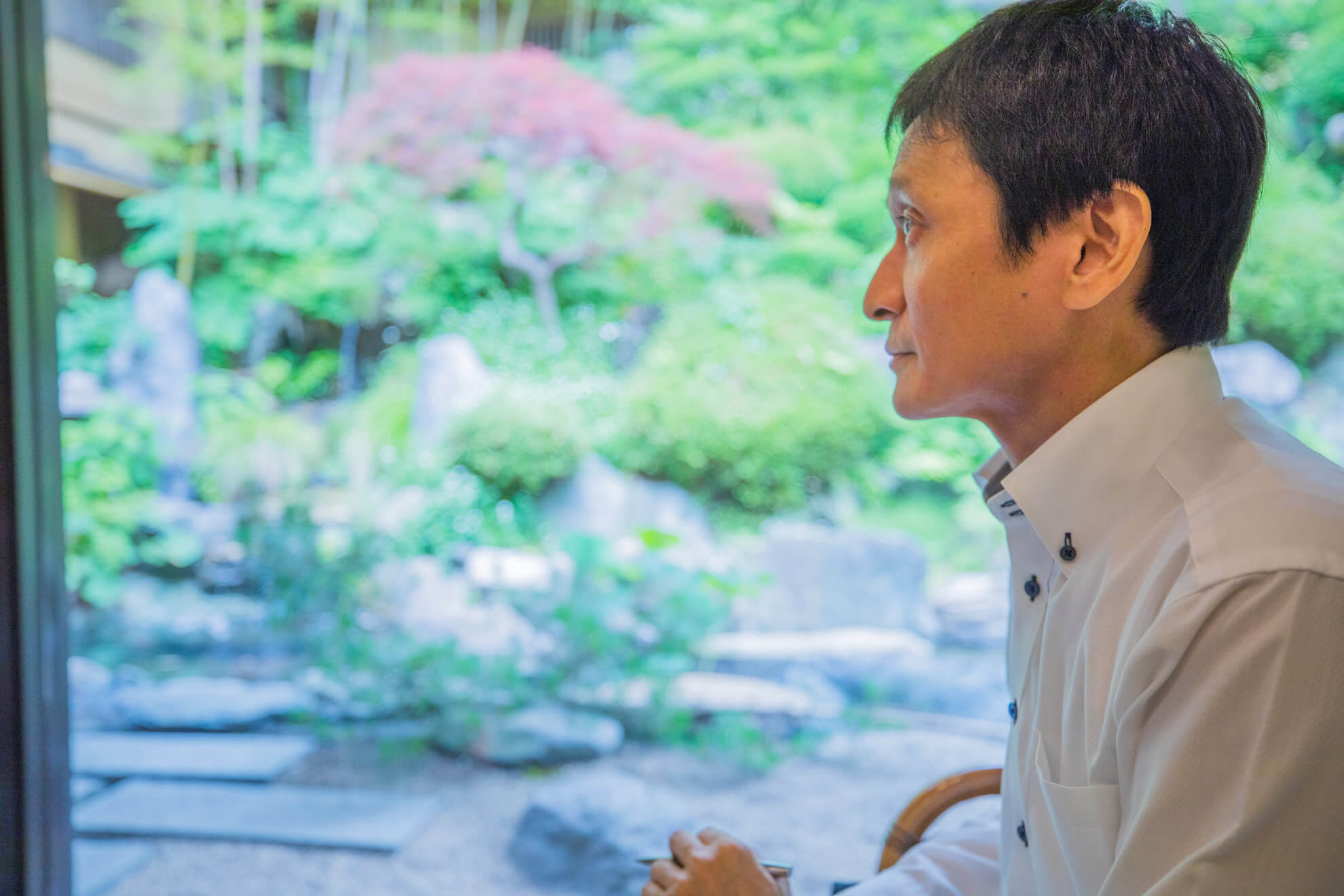
Mr. Ito: Yes. My colleague Mr. Sasaki and I did a lot of searching on the Internet and elsewhere. As our first criterion, we wanted one that would not require any major construction. If our baths were equipped with thermometers from the beginning, they would not be necessary, but since we were going to retrofit our baths, we had to look for something that would not require such work. T&D offered a great solution and as a result of installing this system, temperature management has become unimaginably easy. We can’t go back to the old days.
Q: What temperature do you try to keep the bath water?
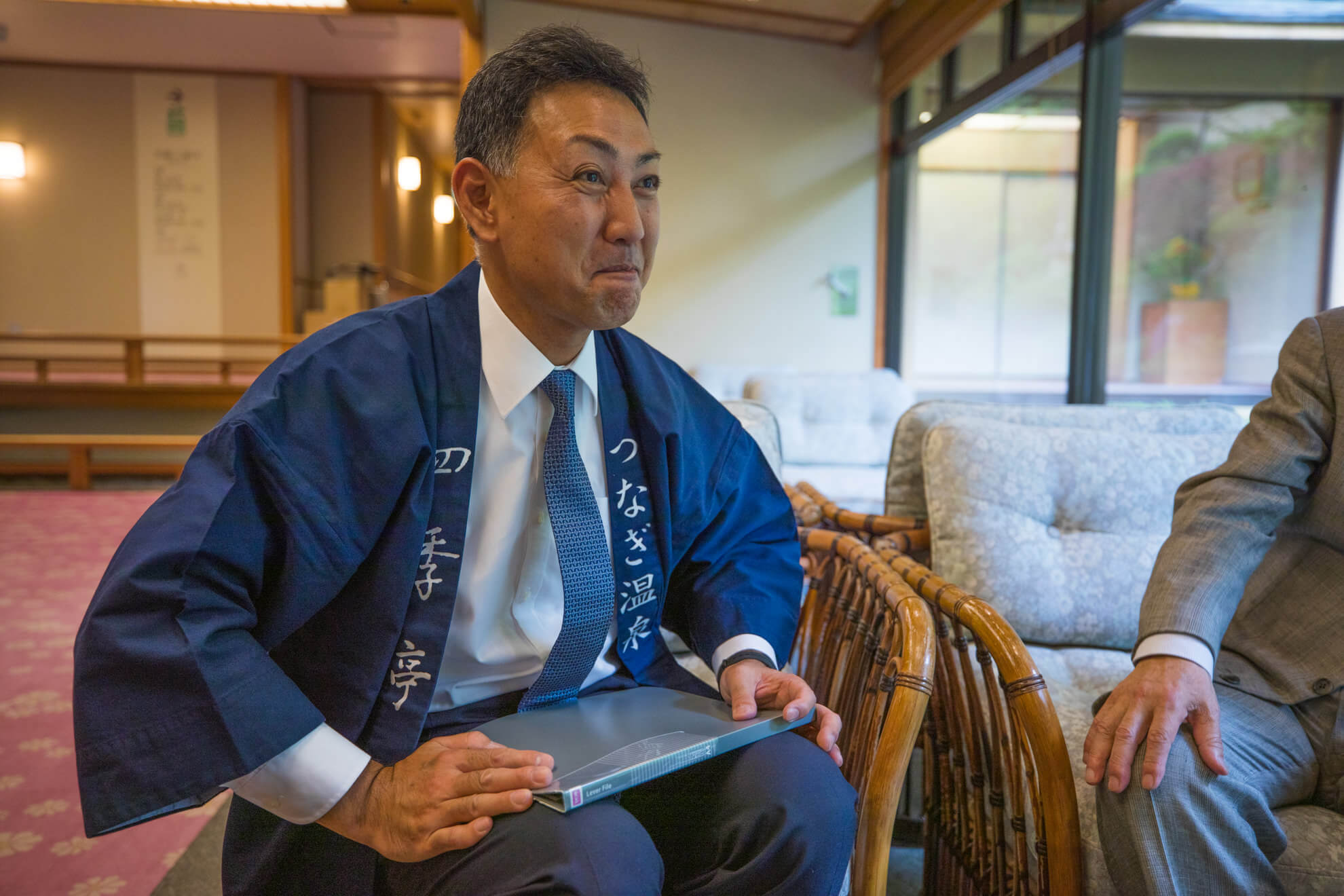
Mr. Ito: Our target is between 41.5℃ and 42℃ (106.7F – 107.6F).
――You try to keep it in a very narrow range.
President Mase: In reality, if the water is too hot, it can cause scalds before you even realize it, which can be quite dangerous. Customers put their feet in the water because they think it is the right temperature.
Q: Are you using the warning email function to receive notifications when the temperature rises too high or falls too low?
President Mase: Yes we have it set to mail my cell phone; it notifies me that the temperature has gone out of range.
Mr. Ito: Specifically, we made settings to send out a warning e-mail if the temperature exceeds 42.7℃. Late at night, there are some customers who like temperatures exceeding 43℃, but basically, we operate so that the temperature does not exceed 42℃.
President Mase: When customers use the hot water in the washing area, the temperature of the hot water pouring into the bathtub drops from over 60℃ to around 53℃.
We look at the tub temperature on a graph throughout the day and see fluctuations based on customer usage, so we turn the hot water on and off accordingly.
At this point, we moved to the office and were shown the temperature of the large bathroom on the computer monitor.
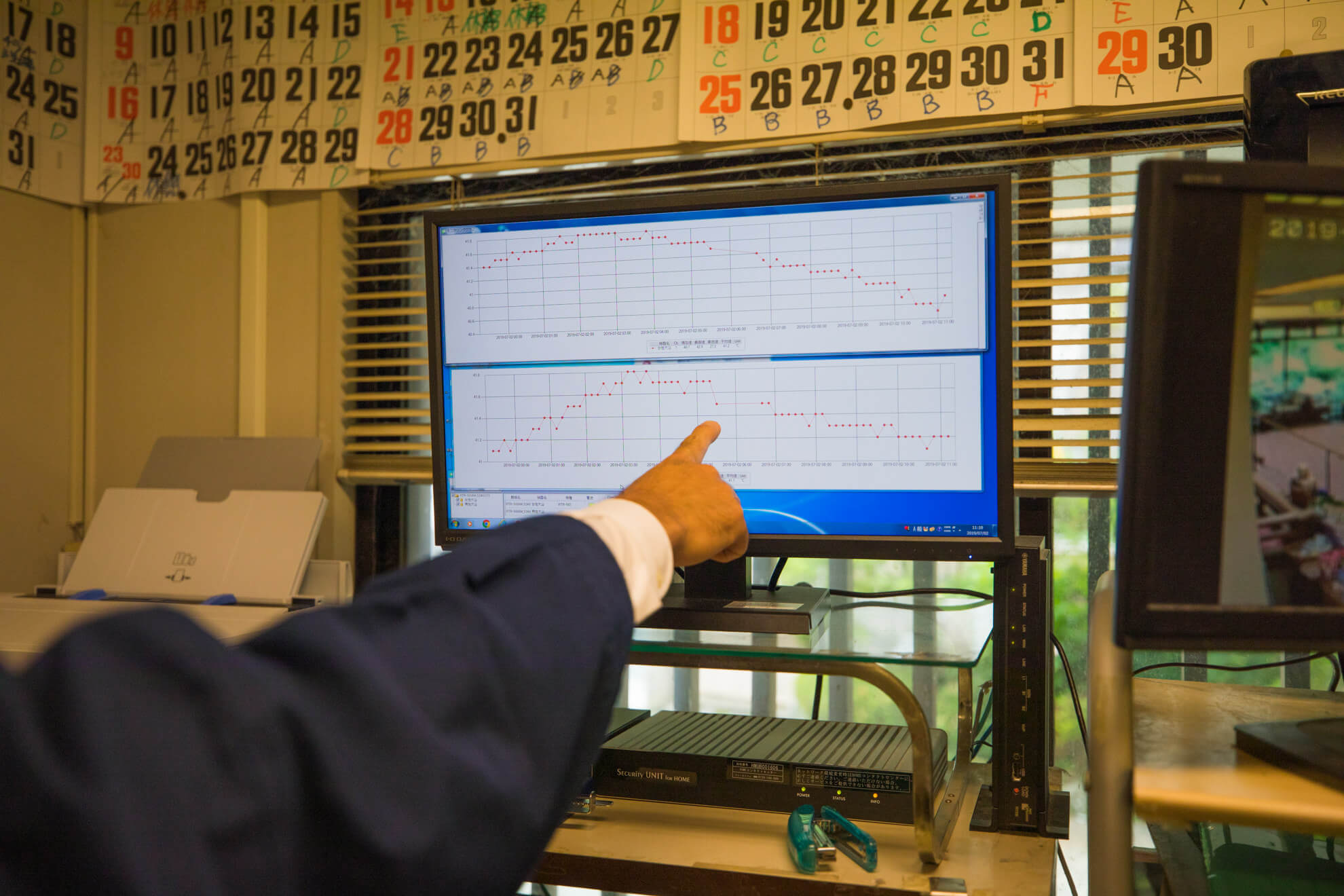
Next, we moved to the large baths where the loggers were actually installed.
“We have installed one logger in the men’s bath and one more in the women’s side to keep an eye on the temperatures.”
Entering the large bathroom, I found a large comfortable-looking bathtub with a view of the inner garden. I imagined it would be very pleasant to take a relaxing soak in the hot water here. At one corner of the bath, there was an RTR-502 logger in a case.
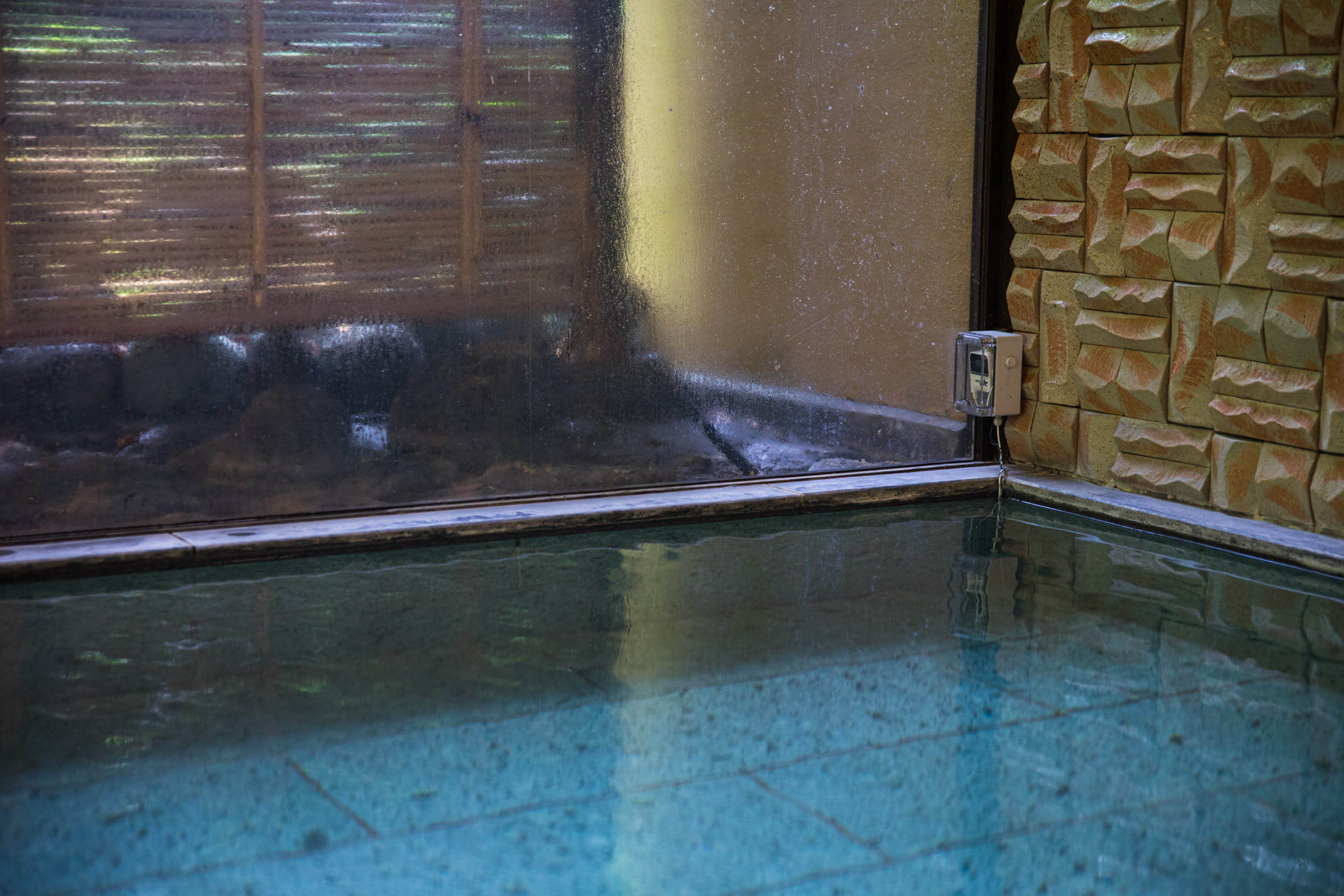
――I see you are using the L-type high-capacity battery pack.
“The location is such that we can’t change batteries often, and the signal is a bit too weak to be transmitted directly from the remote unit to the base unit, so we use a repeater between the two.”
At this point, we went to the changing room to see where the repeater is installed. The RTR-500 was set up in a wooden box at the back of a display cabinet.
(*For the purpose of taking a photo, we asked to turn the box around so that the RTR-500 could be seen.)
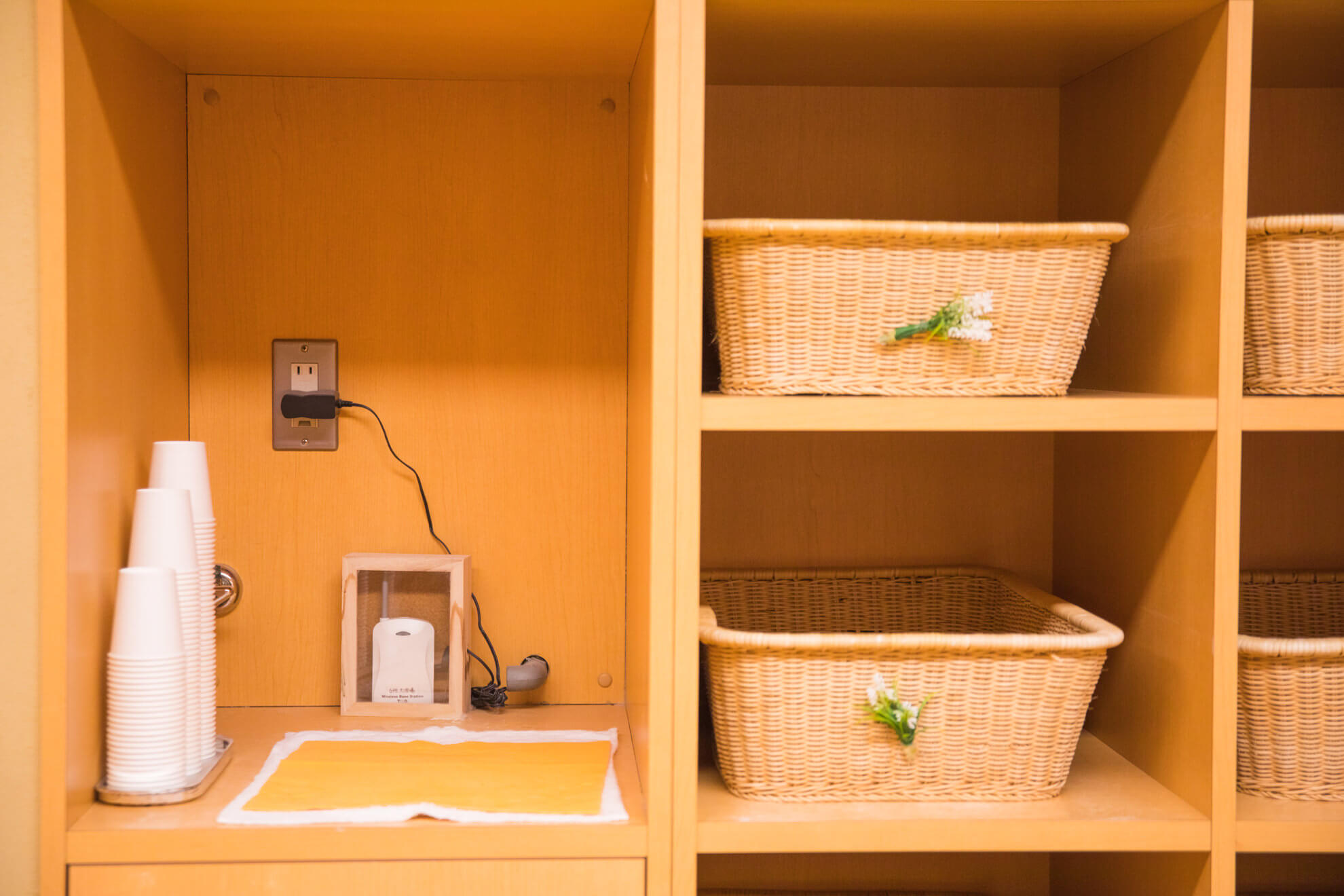
“The base unit is located on the second floor in the men’s bath.”
Next, we moved to check the base unit located on the second floor in the men’s bath area.
“The wireless LAN access point is also on the second floor.”
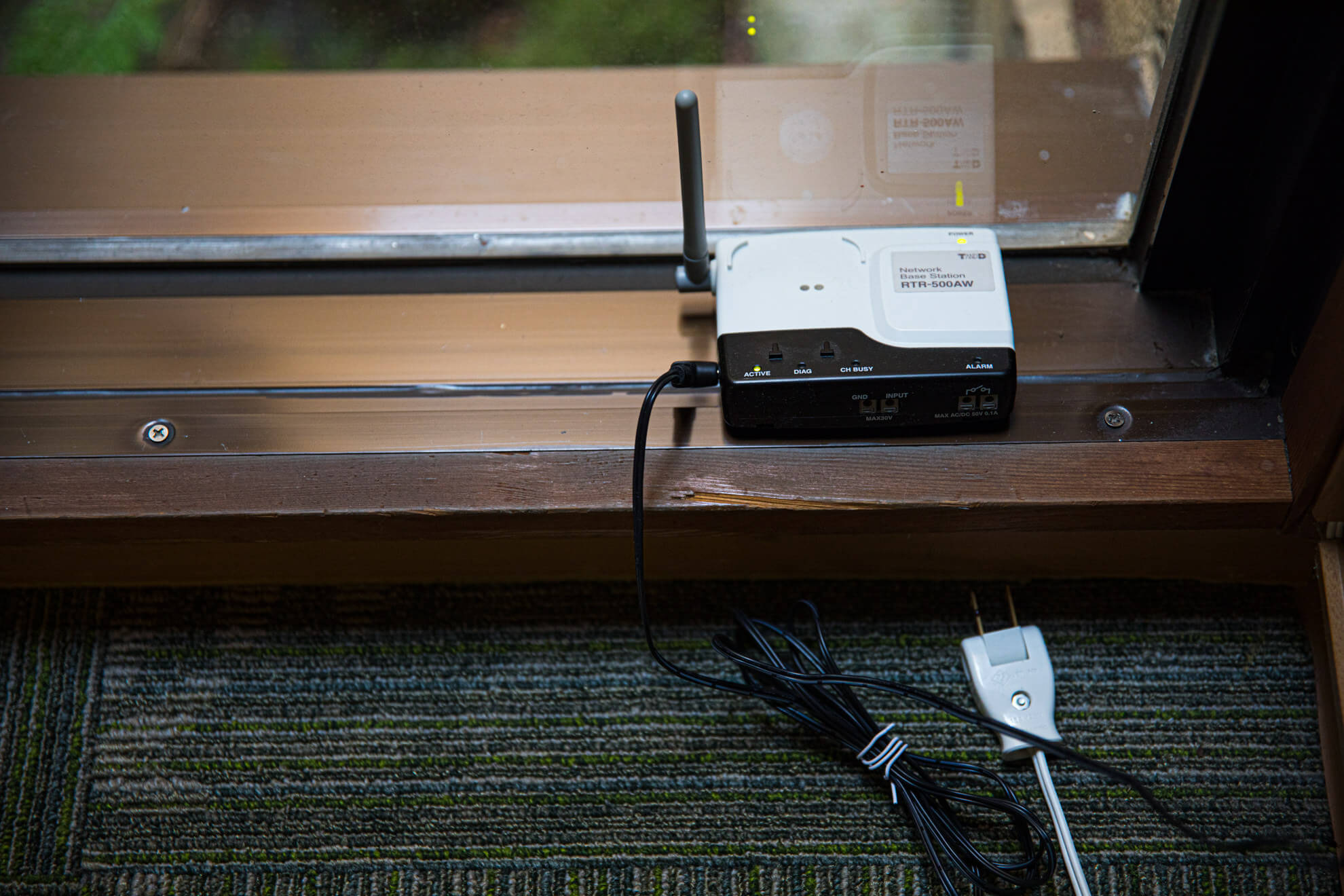
We entered the men’s bath on the second floor. The layout is almost the same as the women’s bath, but the view of the garden from the window is different, giving a new impression. Both the women’s and men’s baths are open to guests any time of day during their stay, so if you stay here, you will certainly want to get in and out of the hot spring often.
“We never know when a guest will be taking a bath, so being able to remotely check the temperature helps us in that sense as well.”
This is another good reason for choosing data loggers with wireless communication.
Since we were there, we were also shown the open-air bath.
The weather on the day of the interview was indeed very good, and the open-air space was comfortable and free of the uneasiness and coldness that one sometimes feels in open-air baths.
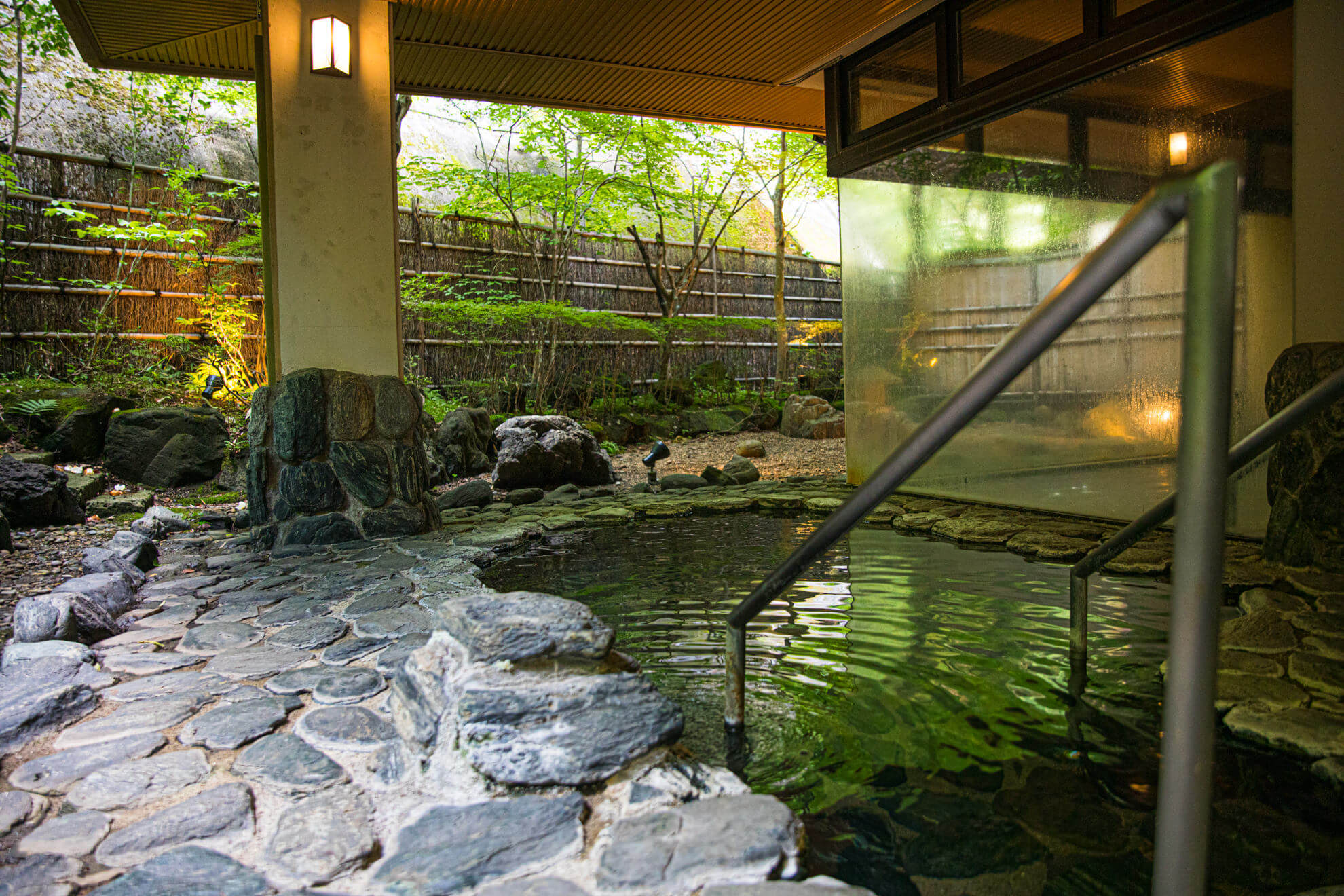
We decided to have a look at one of the rooms with its own open-air bath. A fan was placed facing the bathtub to help cool the water.
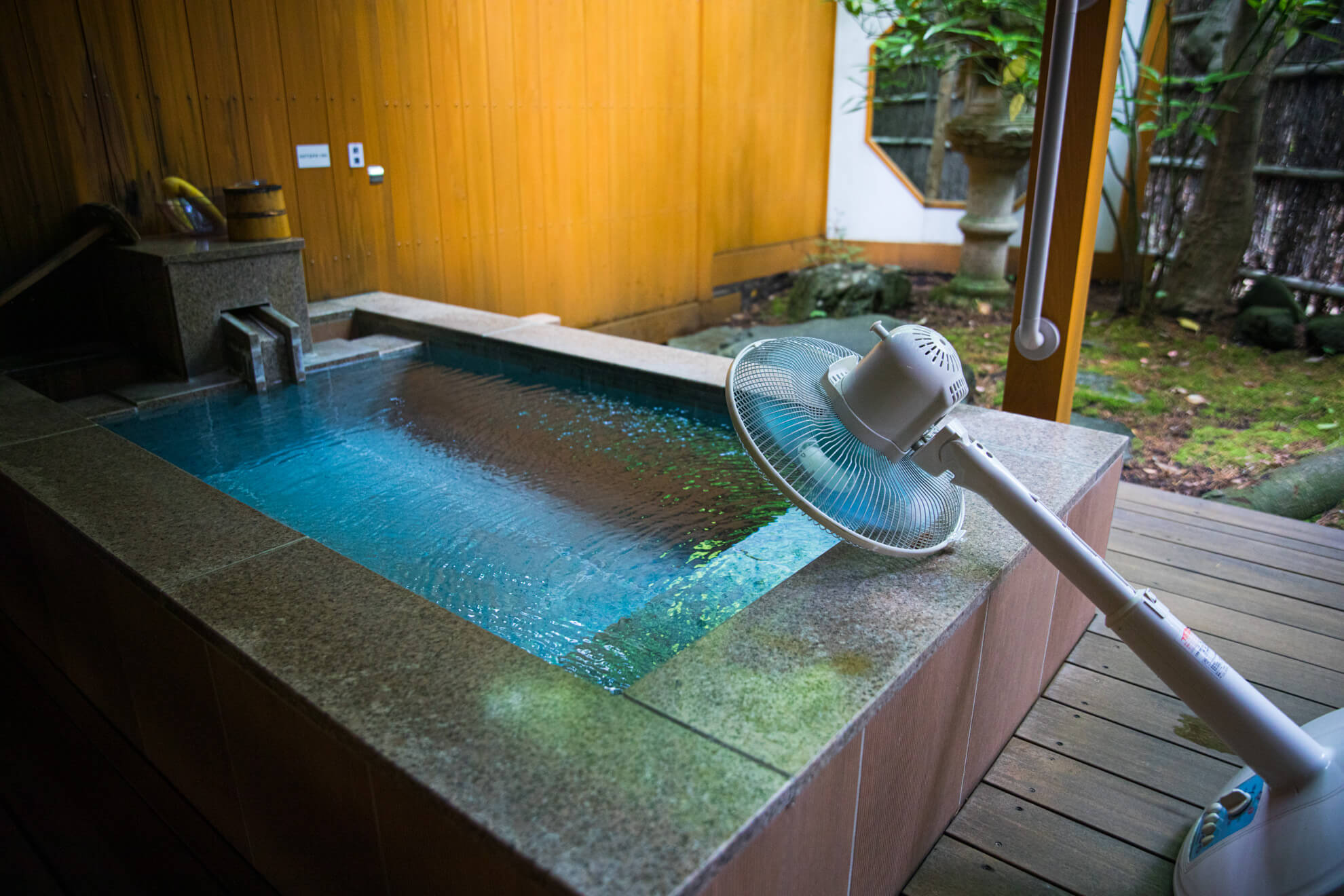
“To keep it 100% pure from the source, we don’t dilute it with any water, but rather cool it down with a fan.
If we dilute it with even one drop of water, it will not be 100% pure from the source. …… This is the president’s policy.”
Shikitei uses only 100% pure hot spring sourced water. Moreover, it appears to be non-recirculated free-flowing hot-spring water.
In other words, the hot spring water is purely natural used without adding water, heating, circulating, or filtering.
Because the water is 100% from the source, the temperature of the large baths drops when hot water is drawn to the private outdoor baths.
In order to adjust the temperature of the private outdoor baths, a fan has to be used.
No wonder they can’t go back to the way it was before using T&D loggers for monitoring.
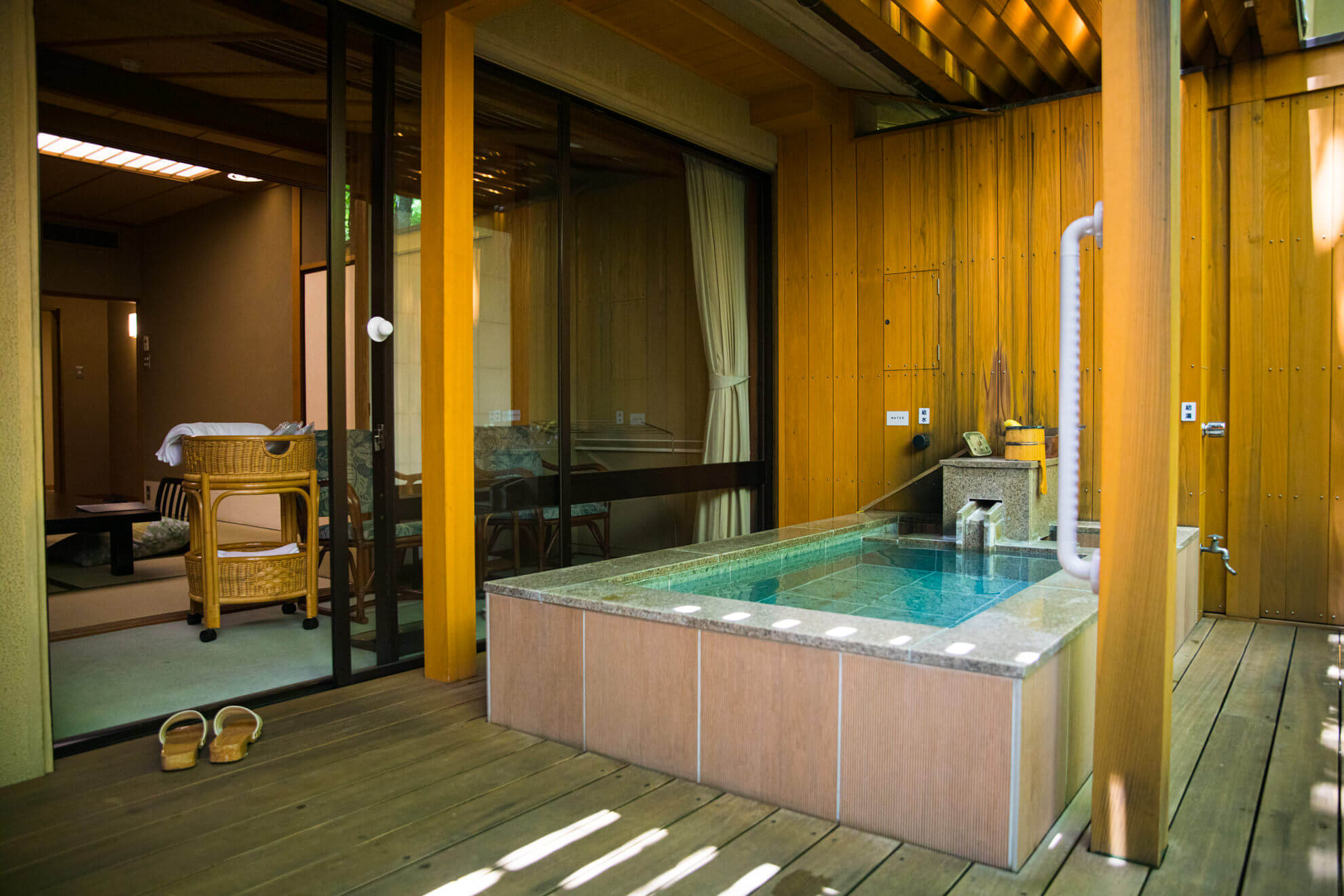
“As the president mentioned earlier, in the past, when water was being used for private room baths the temperature of the women’s bath water dropped. …… In light of this, we are now using a different route to supply the bath water.”
――Does this mean that you adjust the temperature of the hot water before the guests check in, and then they can adjust the hot water by themselves?
“That’s right. And people in rooms with private baths can use as much hot water as they want. ……”
――So that’s why he said before that the hot water in the main bath was being diverted away and the temperature dropped.
“That’s right, and that was one of the main reasons we wanted to find a way to better manage and control temperature.
Mr. Sasaki, the night watchman whose name was mentioned earlier, noticed this and decided to consider using T&D’s logging system as a way to avoid inconveniencing the customers in the main bath.”
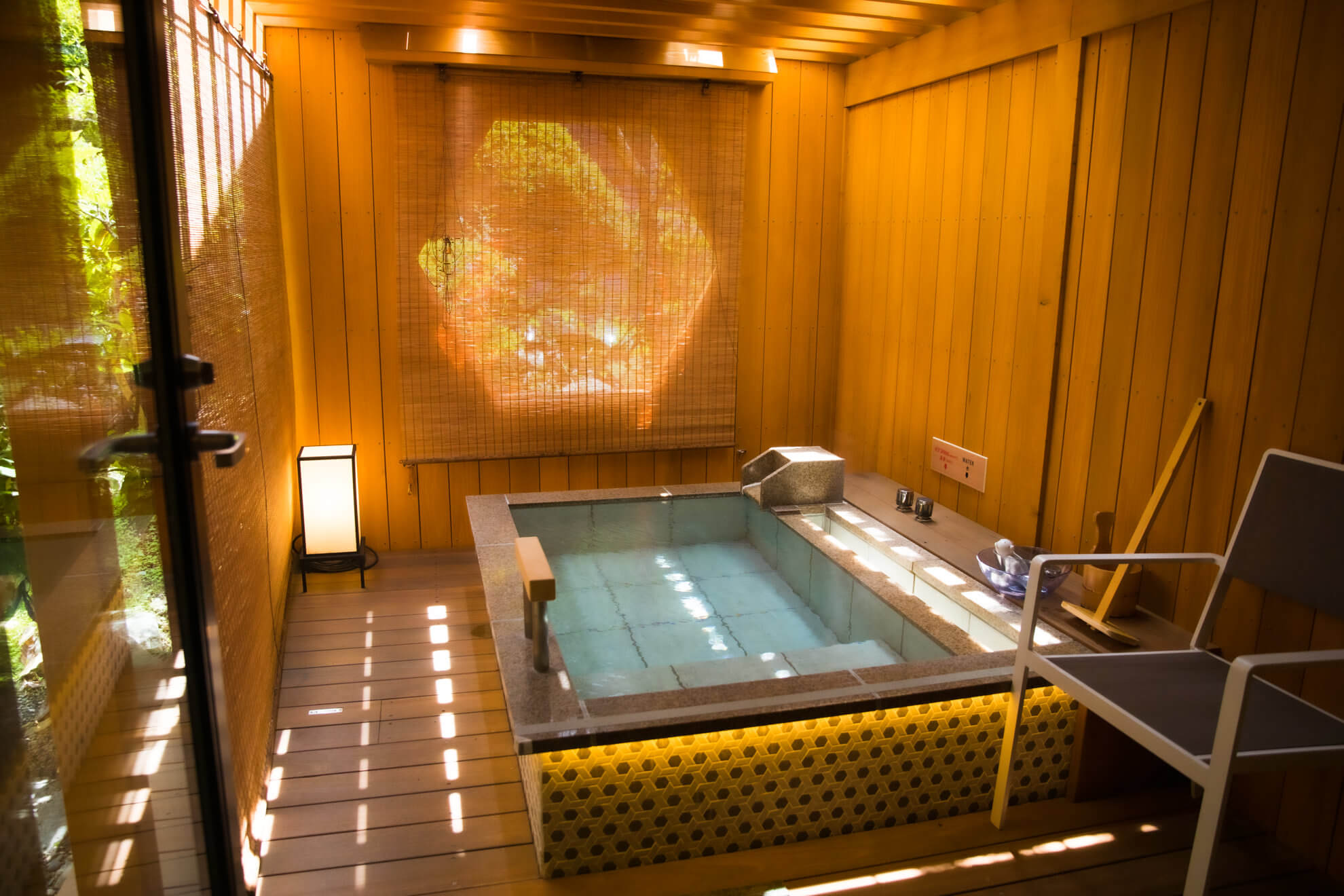
“The question was how to install a logger into a private bath like this.
When we first installed them in the large bathrooms, we were partly concerned about the problem of guests and voyeurism that had recently become an issue.
If we tried to hide the loggers too much, the customer may feel uneasy, so on the contrary, we decided it was better to clearly show that the temperature is being measured.
As for the repeater that we saw earlier, it is hard to tell what it does from its appearance, and as the changing room was the best place to install it we decided to hide it.”
In some industries, users may not want customers to know that temperatures are being measured and monitored. But in other industries, to help reassure customers, it may be better to make clear that temperature is being measured and monitored.
“Fortunately, so far, not a single customer has looked at a logger and asked us what is it for!”
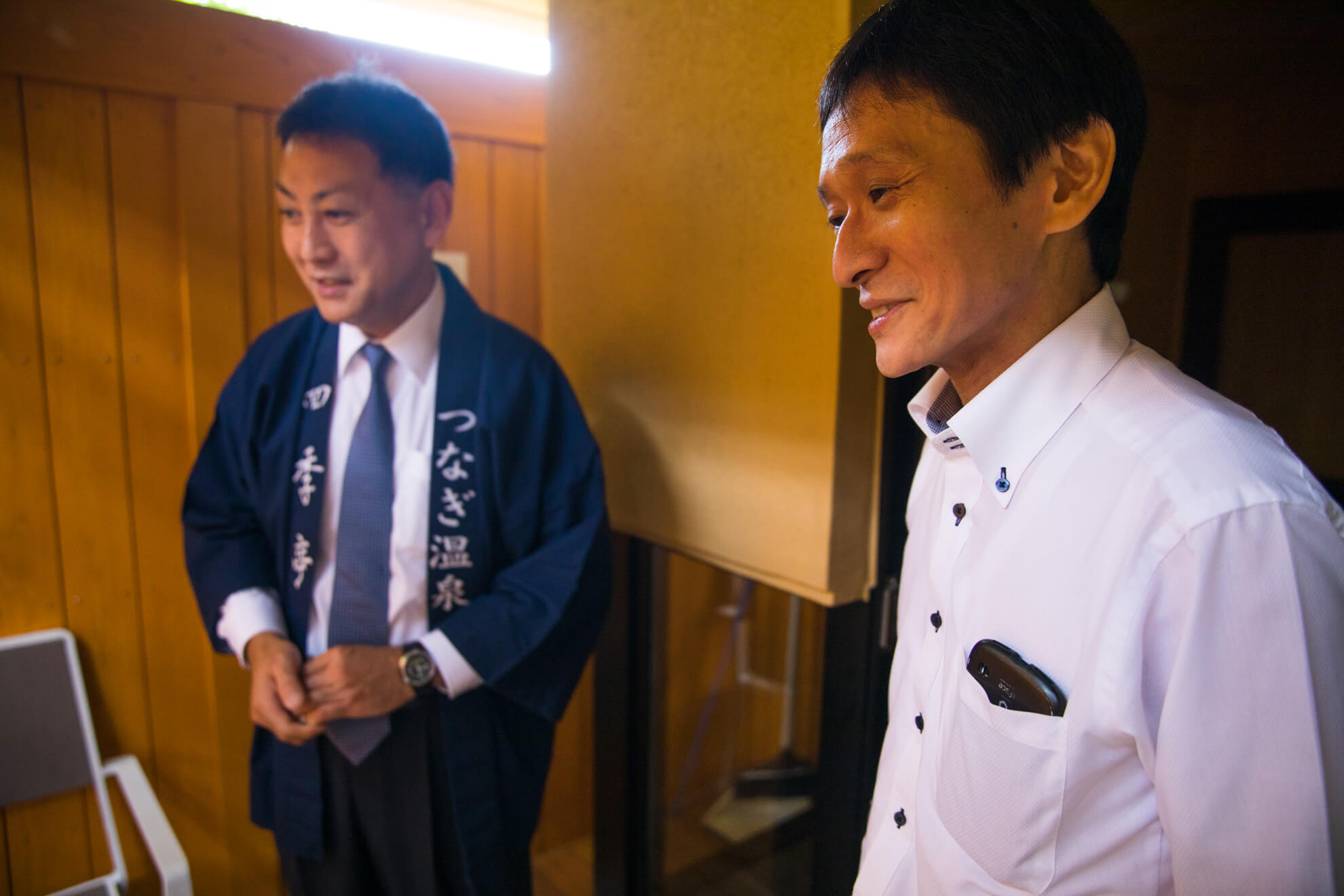
――It’s in a secure case and doesn’t look suspicious.
It’s also great that only the sensor cable needs to be sticking out.
“The hot spring water is quite strong, so it can quickly cause deterioration of metal fittings, for example, and raise rust.”
Saying so, Mr. Ito pointed to the metal fittings that hold the noren (bamboo blind) in place in the outdoor bath.
It’s only been about a year since it was replaced with a new one, but it’s already quite rusty.
――The RTR-502 sensor is coated with fluorocarbon resin, so it should be fine.
What is the composition of this hot spring?
“This is a simple sulfur spring.”
The water at Tsunagi Onsen is a strongly alkaline sulfur spring with a pH of 9.1, which is said to tighten skin and reduce sebum.
――I am surprised that sulfur rusts steel so much.— But the smell of sulfur is not that strong!
“Some hot springs have a stronger sulfur smell than others, but we have a softer sulfur spring. Even so, it rusts like this.”
――Seems like a lot of work to maintain the facilities and equipment!
The RTR-502 you are using is quite durable with its main unit being waterproof for life, but considering the effects or your water mineral composition, it is definitely safer to keep it in a case!
“I’ve been going around to home improvement stores, and checking the devices they sell for measuring temperature, but I haven’t been able to find anything this reliable.”
――Our products are designed to be durable and reliable!
“In that sense, we were lucky to get a ‘hit’ right from the start.”
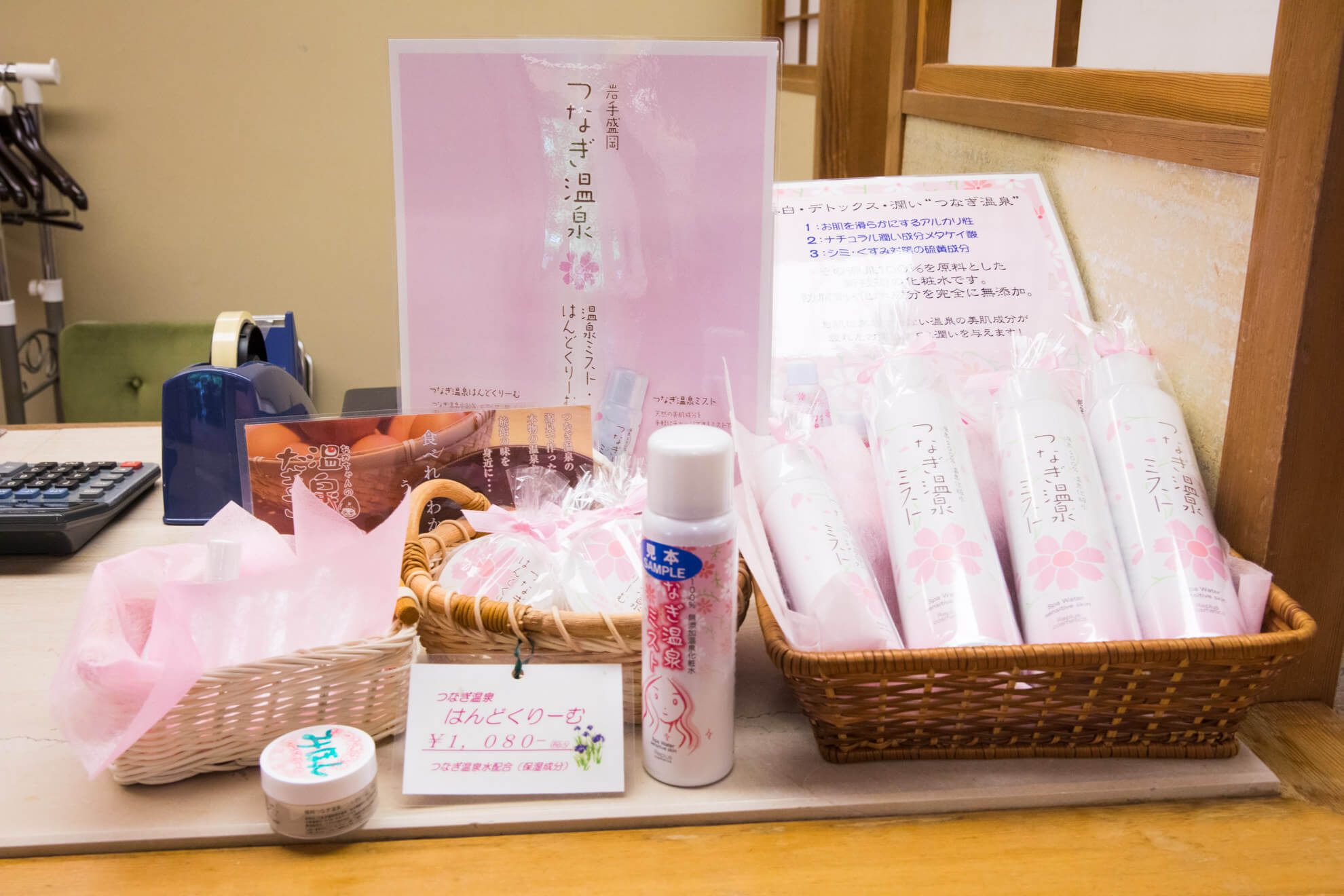
I could see that Tsunagi Onsen Shikitei was a ryokan full of thoughtfulness for its guests. To make sure that their guests get the most enjoyment from the bath water they use only 100% pure spring water and make sure that the temperature of the hot water is strictly under control.
T&D logger systems can lend support to the quality and added value of services in areas that are not often noticed right up front. Although this time we visited Shikitei, T&D loggers are used and will continue to be used in hot springs all over Japan.
When you go to a hot spring, take a moment to look around while soaking in the hot water and you may just find a T&D hot water guardian!
